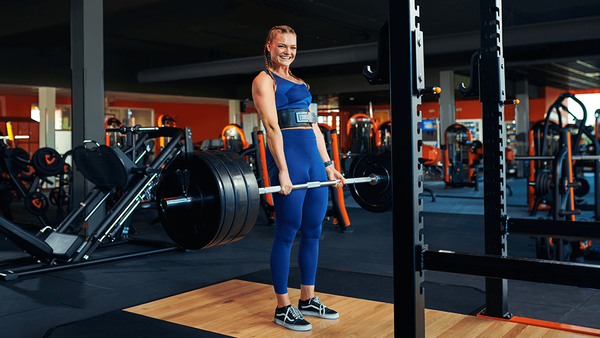This is the third article in our series on deadlifting. There’s a lot to say about it, especially since eadlifting has become a very popular exercise. In previous articles, we talked about the best deadlifting shoes, and we compared the sumo and conventional techniques. Today we’re going to analyze the different types of grips.
How you lift the bar is crucial for a good deadlift workout. The three most common ways are the basic double overhand grip, the mixed grip, and using straps.
Classic Grip
It’s usually called the basic double overhand grip because your hands are evenly spaced apart on the barbell, and your palms are pronated, as in they’re facing down towards you, the lifter. This type of grip is best for beginners and for those who don’t want to lift weights that are too heavy. The main advantage is that by having your hands evenly spaced apart, both sides of your body get an equal workout. The downside is that this position doesn’t give you the strongest grip, and that limits the amount of weight you can lift, as the heavier weights will make the barbel slip out of your grip. This problem has an easy solution: when you feel you’re ready to lift more, it’s time to switch to a new grip.
Mixed Grip
Also called the alternating, grip, this is the most common deadlifting approach for pros. One hand is supinated, as in your palm is facing outwards, and the other is pronated (your palm facing inwards, towards your body). The mixed grip prevents the barbell from rolling and slipping in your hands, allowing you to lift more weight than the classic grip. The only disadvantage is that the uneven amount of pressure being placed on your muscles increases the risk of injury. The two sides of your body will feel unbalanced, which is why it’s recommended that you make sure both hands get their equal share of supinated and pronated positions, alternating after every two or three lifts.
Lifting with straps
Another option is to deadlift using straps, with which you basically tie your wrists to the barbell. This lets you continue lifting even when your hands can’t handle anymore weight. As you can imagine, the downside to doing this is the increased risk of overexertion. There’s also the possibility of weakening your true gripping capacity by depending on the straps. So while it’s important to push yourself, don’t go too far. The straps may give you a crutch to lift more weight when your hands give out, but make sure you do this in moderation, otherwise you’ll hurt yourself.


.jpg?sw=968)


